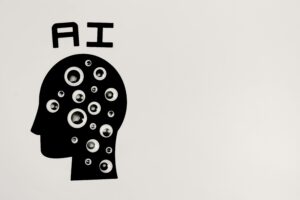What is a Functional Prototype in Product Development?

According to one study, there are expected to be 8.04 million units of 3D printers in the world by 2027.
This means that there’s no excuse not to design a functional prototype for your product development phase. But what is a functional prototype?
Thankfully, we have all the answers, so make sure you keep reading!
What is Function Prototype?
A functional prototype is a model or a sample that you build to test that your product actually turned out and works the way that you envisioned it. It’s also a good way to get an idea of what it looks like, rather than looking at it on a design blueprint.
You can use it in the electronics, design, semantic, and software industries. This will simulate the aesthetics, design, functionality, and materials. However, the size might be scaled down to help you save on materials and cost.
This is one of the final stages in the design and manufacturing stage, so make sure you note any last-minute improvements you’ll need to do.
However, this is a little bit different than a visual prototype. A visual prototype is meant to try a new design and you can show it to investors or potential customers. This is a way to give you an idea of how your product will look and feel.
On the other hand, functional prototypes are in between an idea and a visual prototype. You’ll have the basic function and feel, but it won’t have all of the fancy upgrades that you’ll incorporate into the visual prototype.
Different Types
In addition to the visual and the functional prototype, there are a few others as well.
For example, the form study prototype is a type that will let you explore the size, feel, and look of the product. However, this won’t be able to perform the function as the functional prototype would. You’ll just be able to see what it looks like.
This is great if you need to look at ergonomic or realistic factors. They also normally don’t have the final finish, texture, or color of what your final product would be. They also aren’t meant for testing with the customers.
A user experience prototype will be important to determine how it interacts with humans. This is meant to be used as a user-research tool.
You’ll have the model represented accurately in terms of the size, interfaces, and proportions, but the colors and textures might not be there. This will let you know how your customers will interact with the motion, action, and other factors of it.
By running a small study, you can go back to the drawing board and work out any issues before you start making your final product.
Why It’s Important
If the functional prototype won’t have all of the elements of the final product, why is it still important to make them?
Some companies might think that it’s a waste of time and resources during the product development stage, but there are actually a few benefits of creating one.
Apply Use
Firstly, you can create a prototype that uses the same materials that the final one will be made from. This way, you can simulate how it resists certain chemicals, thermal readings, and simulate the actual function before you start mass-producing them.
You’ll also be able to create one to see how all of the parts fit together. Maybe your engineers accidentally miscalculated the size of a part, and now would be a good time to test and make sure it all fits.
You should compare, measure, and check the dimensions for any errors before you approve the prototype.
Define Your Requirements
This is also a great way to make sure that your prototype has met all of your user’s requirements. You should’ve made a list of the requirements before you started developing.
This checklist can be used to run on your prototype before you start making the actual product.
For example, is your design realistic? Will you be able to fit in all the needs rather than all the wants? You’ll be able to see which components are actually necessary and which ones aren’t.
Test in the Real World
It’ll also give you a chance to validate your design in real-time. The testing and piloting stage will give you a chance to evaluate everything, including the strength, tolerances, materials, design, mechanisms, and even how easy or realistic it is to manufacture this product.
If you are limited on supplies, this prototype will give you a great opportunity to find any errors now and correct them before the final prototype.
How to Create One
There are a few main ways to create a prototype. One of them is Computer Numerical Control (CNC) machining. This is made to make a lot of automotive prototypes.
They’ll have the best dimensions and aesthetics, and they are great for when you’re making car parts.
Another popular method is 3D printers, thanks to their wide availability now. This technology will print out a three-dimensional prototype based on whatever blueprints you upload into the machine.
Learn More About a Functional Prototype
These are only a few things to know about what a functional prototype is, but there are many more things to keep in mind.
We know that running a business and developing new products can be stressful, but we’re here to help you out.
If you enjoyed this article, make sure that you explore our website to find more articles just like this one.















